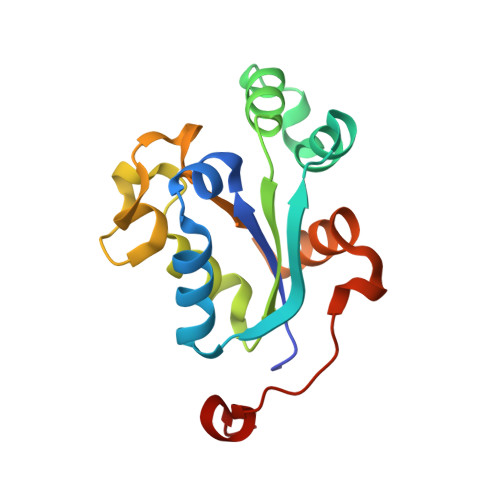Molecular and structural basis of nucleoside diphosphate kinase-mediated regulation of spore and sclerotia development in the fungusAspergillus flavus.
Wang, Y., Wang, S., Nie, X., Yang, K., Xu, P., Wang, X., Liu, M., Yang, Y., Chen, Z., Wang, S.(2019) J Biological Chem 294: 12415-12431
- PubMed: 31243100
- DOI: https://doi.org/10.1074/jbc.RA119.007505
- Primary Citation of Related Structures:
6K3H - PubMed Abstract:
The fundamental biological function of nucleoside diphosphate kinase (NDK) is to catalyze the reversible exchange of the γ-phosphate between nucleoside triphosphate (NTP) and nucleoside diphosphate (NDP). This kinase also has functions that extend beyond its canonically defined enzymatic role as a phosphotransferase. However, the role of NDK in filamentous fungi, especially in Aspergillus flavus ( A. flavus ), is not yet known. Here we report that A. flavus has two NDK-encoding gene copies as assessed by qPCR. Using gene-knockout and complementation experiments, we found that AfNDK regulates spore and sclerotia development and is involved in plant virulence as assessed in corn and peanut seed-based assays. An antifungal test with the inhibitor azidothymidine suppressed AfNDK activity in vitro and prevented spore production and sclerotia formation in A. flavus , confirming AfNDK's regulatory functions. Crystallographic analysis of AfNDK, coupled with site-directed mutagenesis experiments, revealed three residues (Arg-104, His-117, and Asp-120) as key sites that contribute to spore and sclerotia development. These results not only enrich our knowledge of the regulatory role of this important protein in A. flavus , but also provide insights into the prevention of A. flavus infection in plants and seeds, as well as into the structural features relevant for future antifungal drug development.
- Key Laboratory of Pathogenic Fungi and Mycotoxins of Fujian Province, Key Laboratory of Biopesticide and Chemical Biology of Education Ministry, and School of Life Sciences, Fujian Agriculture and Forestry University, Fuzhou 350002, China.
Organizational Affiliation:
















